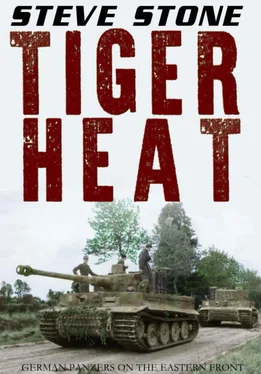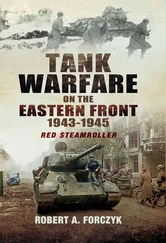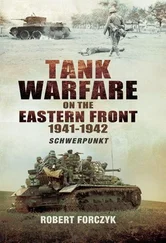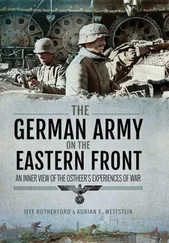As the Tiger moved up towards a line of trees, it was unaware of the T-34 lurking in the trees. Its 76-mm barrel bearing down on the Tiger. The T-34 managed to get a shot off as the first shell hit the Tiger, on the rear, near the tracks and the idler wheel. It was a high explosive (HE) round letting out a bright white flash as it exploded…
World War 2 saw many technologies make some rapid progress. Aircraft design made an almost amazing leap from the bi-plane to the dawn of the jet engine. There is no doubt that German engineering skills produced designs years ahead of their time. In some cases, this knowledge such as the V-2 missile and swept wings of the Me-262 would aid the post war military design.
Tank design was another area were the Germans excelled. The Tiger, Panther and later King Tiger in some ways was over engineered. They were labour intensive to produce and made use of expensive materials. The Tiger I took around twice as long to build as another German tank of the period. In battle, its weight caused issues with its tracks and high fuel consumption limited its range. Its heavy weight of 56 tonnes put a strain on track, transmission and suspension. Overall, though, it was mechanically reliable. Many of the brutal experiences learnt on the battlefields of World War 2 has aided tank technology and tactics. It was Ferdinand Porsche gave the tank its Tiger nickname.
The development of the Tiger began as early as 1939. The development programme accelerated after May 1941 when the Wehrmacht asked for a 45-ton tank which had as its principle weapon as an 88mm gun. The 88mm gun had already proved itself in battle as an artillery weapon. The 88mm gun would allow the Tiger to out shoot any gun currently carried by Russian tanks. However, the Tigers 88m gun was not related to the FlaK 36 88 anti-aircraft gun in anything but calibre. The two guns were merely parallel designs.
The Tiger design brief was for a Tank that had both heavy armour and a powerful main gun. This was achieved with an 88mm KwK 36 a very accurate gun. Its armour was 100 mm thick in the frontal area. The frontal turret armour was 100 mm thick and a 120-mm thick gun mantlet. The Tiger also 61 mm hull side plates. Armour plates were mostly flat, with interlocking construction. The armour joints were of high quality, being stepped and welded rather than riveted and were made of maraging steel. The first Tiger prototype was scheduled to be ready for Hitler’s birthday on April 20, 1942. This though gave the designers only a limited amount of time, further hampered by the Wehrmacht constantly changing the design requirements.
On April 20, 1942 two new versions of the Tiger – one from Henschel and the other from Porsche were displayed in front of Hitler at his base in Rastenburg. The Henschel design was considered to be the superior design as well as easier to put into mass production. The full production of the first Tiger tank started in August 1942. The official designation of the new tank was Panzerkampfwagen VI Tiger Ausf. H.
The Tiger I was the first German combat tank to be fitted with overlapping road wheel suspension which gave the tank very good weight distribution. For a tank the size of the Tiger, its ride was stable and was considered to be comfortable for the crew on board. Tigers were fitted with two types of tracks – a 520 mm track for travel and transportation and a 724-mm version for combat. One of the most advanced features of the Tiger was its assembly process. Flat section armour plate was used throughout the assembly process, which allowed the use of heavy armour. Various parts were made as one complete unit complete with interlocking joints that made assembly a quick process and increased strength. The hull of the first Tigers was divided into four sections, two in the front for the driver and the bow gunner and radio operator, a central fighting compartment and a rear engine compartment.
The thick armour made the Tiger impervious to frontal fire from tanks like the 75mm armed M4 Sherman, 76.2mm armed T-34 and 75mm armed Cromwell tank, but vulnerable to the 76mm of up-gunned Sherman’s, the 85mm of the T-34-85 and the British Ordnance QF 17-pounder.
The rear of the tank which held an engine compartment was flanked by two separate rear compartments each containing a fuel tank, radiator and fans. The Germans had not developed an adequate diesel engine, so a petrol gasoline power plant had to be used instead. The original engine utilised was a 21.35-litre 12-cylinder Maybach HL 210 P45 developing 650 hp at 3,000 rpm. Although it was good engine, it was underpowered for the tank. After the 250th Tiger, the engine was swapped for an upgraded version of the same engine. The aluminium block being replaced with a cast iron black that allowed for larger cylinders, which in turn gave more power. The engine was a v design with two cylinder banks at a 60-degree angle. These changes along with others increased power to 700 hp. An inertial starter was mounted on the right side of the engine compartment and driven via chain gears through a port in the rear wall. The engine could be lifted out through a hatch on the rear hull roof.
The engine drove front sprockets, which were mounted quite low. The Krupp-designed 11-tonne turret had a hydraulic motor whose pump was powered by mechanical drive from the engine. A full 360-degree rotation took about 60 seconds.
Another new feature was the Maybach-Olvar hydraulically controlled semi-automatic pre-selector gearbox. The extreme weight of the tank also required a new steering system. The clutch-and-brake system, typical for lighter vehicles, was retained only for emergencies. Normally, steering depended on a double differential, Henschel’s development of the British Merritt-Brown system. The vehicle had an eight-speed gearbox, and the steering offered two fixed radii of turns on each gear, thus the Tiger had sixteen different radii of turn. In first gear, at a speed of a few km/h, the minimal turning radius was 11ft 3. In neutral gear, the tracks could be turned in opposite directions, so the Tiger I pivoted in place. There was a steering wheel instead of a tiller or levers and the steering system was easy to use and ahead of its time.
Production of the Tiger I began in August 1942, and by August 1944 when production ceased 1,355 had been produced. Production started at a rate of 25 per month and peaked in April 1944 at 104 per month. Deployed Tiger I’s peaked at 671 on July 1, 1944. When the improved Tiger II began production in January 1944, the Tiger I was soon phased out. However, each tank cost over 250,000 marks to manufacture.
The Tiger first saw action in August/September 1942 in the Leningrad campaign. However, the terrain was swampy forestland – not very suited to the Tiger. However, on January 12, 1943, four Tiger’s, with eight Panzer MKIII’s, faced 24 Russian T-34’s near Leningrad. The ground was frozen solid which greatly aided manoeuvrability. Twelve T-34’s was destroyed and the other twelve retreated. Given the correct terrain to fight on, the Tiger easily proved its fighting worth.
The Tiger was the main tank spearhead for the Germans at Kursk. Here it did not do well. Many tanks had left their factories before rigorous mechanical checks had been undertaken. Thus, many suffered major mechanical malfunctions during the battle. In the famous tank battle at Kursk of July 12, the Tiger could hit a T-34 from 1500 metres but when the two got to close-quarter fighting, the T-34 proved to be superior. The T-34 was faster and more manoeuvrable than the Tiger.
It was in the retreat from Russia that the Tiger proved its defensive qualities that were to hinder both the Russians on the Eastern Front and the Allies on the Western Front. On October 18, 1943, one Tiger led by Sepp Rannel destroyed 18 Russian tanks. Michael Wittman, another Tiger commander, had destroyed 119 tanks, including great success in Normandy after D-Day. In Normandy, Wittman’s Tigers destroyed 25 British tanks, 14 half-tracks, 14 Bren-gun carriers in a short and bloody battle around the village of Villers Bocage. However, Wittman lost 6 Tigers which were very difficult to replace – as were his experienced crew.
Читать дальше












